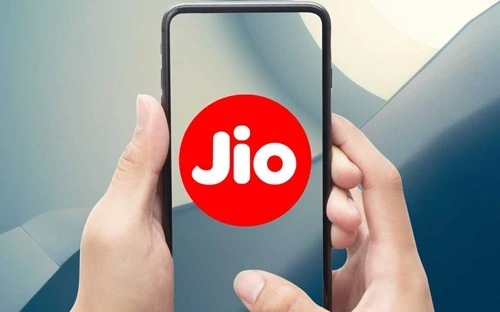Reliance Jio, a subsidiary of Reliance Industries Limited (RIL), has transformed India’s telecom industry since its launch in 2016. With its disruptive pricing, high-speed data services, and extensive digital ecosystem, Jio quickly established itself as a leading telecom operator in India. Today, Jio is not just a telecom provider but a digital services powerhouse, offering everything from fiber broadband to online content, payments, and smart devices. However, as India’s telecom and digital services market evolves, Jio faces both growth opportunities and formidable challenges. This SWOT (Strengths, Weaknesses, Opportunities, Threats) analysis explores Jio’s current position and future outlook in the highly competitive and dynamic telecom and digital services industry.

Strengths
1. Extensive Network and Pan-India Presence:
Jio’s 4G network has one of the most extensive coverages in India, reaching over 99% of the country’s population. The company invested heavily in fiber optic and 4G infrastructure from the beginning, providing fast and reliable internet access, even in rural areas where connectivity was previously limited. This wide reach has allowed Jio to capture a massive subscriber base across urban and rural regions, strengthening its position as India’s largest telecom operator by subscriber count.
2. Disruptive Pricing Strategy and Data-Driven Model:
Jio entered the market with ultra-low pricing, offering free voice calls and affordable data plans that disrupted the telecom industry. Its aggressive pricing strategy led to a massive shift in consumer behavior, making data affordable for millions of Indians. By offering high-speed data at low prices, Jio catalyzed a digital revolution in India, attracting customers from competitors and increasing internet adoption. This data-driven model has transformed the way people consume information and entertainment in India.
3. Diversified Digital Ecosystem and Strategic Partnerships:
Jio has diversified beyond telecom into a comprehensive digital ecosystem that includes JioFiber broadband, JioTV, JioCinema, JioSaavn, and JioMart, among others. Its ecosystem approach allows Jio to cross-sell services, engage customers on multiple fronts, and capture value across the digital supply chain. Jio’s strategic partnerships with companies like Facebook, Google, and Microsoft have further strengthened its ecosystem, providing access to cutting-edge technology, content, and capital, while enhancing customer engagement.
4. Strong Financial Backing from Reliance Industries:
As part of Reliance Industries, Jio benefits from strong financial support, which has enabled it to invest heavily in infrastructure, network expansion, and innovation. This backing gives Jio a significant advantage in the capital-intensive telecom industry, allowing it to pursue ambitious projects, scale rapidly, and weather competitive pressures. Reliance’s established relationships and business acumen have also facilitated partnerships that enhance Jio’s technological and market capabilities.
Weaknesses
1. High Debt Levels and Capital-Intensive Model:
Despite its rapid growth, Jio operates in a highly capital-intensive industry, requiring substantial investments in network infrastructure, spectrum acquisition, and technology upgrades. This capital expenditure has contributed to high debt levels for Jio’s parent company, Reliance Industries. Managing this debt while sustaining growth is a critical challenge, especially as Jio prepares to roll out 5G services, which require additional investment.
2. Dependence on Low ARPU (Average Revenue Per User):
Jio’s low-cost pricing strategy, while instrumental in capturing market share, has led to a relatively low ARPU compared to global telecom standards. Although Jio has attempted to raise ARPU through premium offerings like JioFiber, its ARPU remains lower than its competitors in developed markets. This reliance on low-cost subscribers impacts profitability and may make it challenging for Jio to generate sustainable returns on its substantial investments.
3. Limited Presence in Premium Consumer Segments:
While Jio has a strong presence in the mass market, its appeal to high-end, premium consumers is relatively limited compared to traditional players like Airtel, which has historically focused on offering premium services. Jio’s low-cost, high-volume model has primarily attracted price-sensitive customers, which may limit its ability to expand revenue in the premium segment, where higher ARPU could improve margins.
4. Customer Service and Network Quality Challenges:
As Jio rapidly scaled its subscriber base, it faced issues related to customer service and network quality, particularly in densely populated urban areas. While Jio has invested in infrastructure to address these challenges, customer complaints regarding call drops, data speed, and service response times continue to surface. Maintaining high service quality across its massive user base is crucial, especially as Jio seeks to attract more premium customers.
Opportunities
1. Expansion into 5G and Advanced Digital Services:
The upcoming rollout of 5G technology in India represents a significant opportunity for Jio to enhance its service offerings. With faster speeds, low latency, and high connectivity, 5G can unlock new revenue streams for Jio, particularly in advanced applications like the Internet of Things (IoT), smart cities, autonomous vehicles, and cloud gaming. Jio’s recent trials and preparation for 5G deployment indicate its intent to lead India’s 5G adoption, positioning it to capture both consumer and enterprise demand.
2. Growth in Rural Digital Inclusion and Internet Penetration:
India’s rural population remains an underserved market with considerable growth potential for internet connectivity. With its extensive network, Jio is well-positioned to drive digital inclusion in rural areas, helping millions of Indians access the internet for the first time. By introducing affordable data plans and low-cost smartphones, Jio can expand its subscriber base, capture rural demand, and strengthen its leadership position in the telecom sector.
3. Expansion of Digital Services and Platforms:
Jio’s foray into digital platforms such as JioMart (e-commerce), JioTV (entertainment), JioSaavn (music streaming), and JioMeet (video conferencing) allows it to diversify revenue streams and capture value across multiple digital services. With increasing digital adoption in India, these platforms have the potential to drive Jio’s future growth. Jio can also monetize these services by introducing subscription-based models, premium content, and targeted advertising, enhancing customer engagement and ARPU.
4. Strategic Partnerships and International Expansion:
Jio’s strategic partnerships with global tech giants like Google and Facebook provide it with technology support, content, and global expertise. These partnerships can enable Jio to enhance its service offerings and introduce advanced technologies to its customer base. Additionally, Jio has the potential to expand internationally by partnering with local operators in emerging markets, where its low-cost, high-reach model could be particularly effective.
Threats
1. Intense Competition from Airtel and Vi (Vodafone Idea):
Despite Jio’s dominance, the Indian telecom market remains highly competitive, with Airtel and Vi posing significant challenges. Airtel, in particular, has focused on premium services, rural expansion, and network quality, positioning itself as a strong competitor to Jio. Price wars, service differentiation, and customer retention efforts from rivals could impact Jio’s growth trajectory, particularly if these competitors close the gap in network quality and pricing.
2. Regulatory and Compliance Risks:
India’s telecom industry is highly regulated, with ongoing scrutiny from the Department of Telecommunications (DoT) and the Telecom Regulatory Authority of India (TRAI). Changes in telecom policies, regulatory fees, and spectrum pricing can affect Jio’s profitability. Moreover, regulatory issues surrounding data privacy, spectrum auctions, and tariffs could impact Jio’s operational flexibility and increase compliance costs.
3. Technological Disruption and Cybersecurity Risks:
As Jio expands its digital ecosystem, it faces risks related to cybersecurity and technological disruption. Data breaches, cyber-attacks, or service disruptions could compromise customer trust and tarnish Jio’s brand image. Additionally, technological advances, such as satellite-based internet services (e.g., Starlink by SpaceX), could disrupt traditional telecom services, posing a potential threat to Jio’s market share if not addressed proactively.
4. High Capital Expenditure for 5G Deployment:
While 5G presents significant growth opportunities, the costs associated with 5G spectrum acquisition, infrastructure development, and deployment are substantial. As Jio prepares for 5G rollout, managing these capital expenditures without compromising financial stability will be crucial. Failure to implement 5G efficiently could delay Jio’s ability to capitalize on the technology’s potential, impacting its competitiveness in the next phase of telecom evolution.
Future Outlook
Reliance Jio’s future outlook is promising, with substantial growth potential driven by digital adoption, 5G deployment, and expansion into advanced digital services. As India’s demand for data and digital services continues to rise, Jio’s extensive network, competitive pricing, and diversified ecosystem provide a strong foundation for sustained growth. Jio’s anticipated 5G rollout positions it to lead India’s next digital revolution, capturing demand for faster and more reliable internet services across both urban and rural areas.
The expansion of digital services offers a significant growth avenue. Jio’s investments in platforms like JioMart, JioTV, and JioSaavn can drive increased engagement and revenue diversification. By offering bundled services, personalized content, and premium subscriptions, Jio can enhance ARPU and customer loyalty. Additionally, strategic partnerships with Google, Facebook, and other global tech giants can provide access to cutting-edge technology and global expertise, enabling Jio to strengthen its digital ecosystem and deliver innovative services.
However, Jio must address certain challenges to sustain its growth. Balancing competitive pricing with profitability is essential to reduce dependence on low ARPU. Improving network quality and customer service will be critical, particularly as Jio seeks to capture higher-value customers. Managing regulatory compliance, mitigating cybersecurity risks, and navigating the high costs of 5G deployment are also crucial to ensuring sustainable growth.
In conclusion, Jio’s strengths in market reach, digital services, and disruptive pricing have established it as a leader in India’s telecom and digital landscape. By leveraging opportunities in 5G, digital services expansion, and rural connectivity, Jio can maintain its leadership position and continue driving digital transformation in India. With a strategic focus on innovation, customer-centric solutions, and operational efficiency, Reliance Jio is well-positioned to capture growth in India’s evolving telecom and digital services sector.

